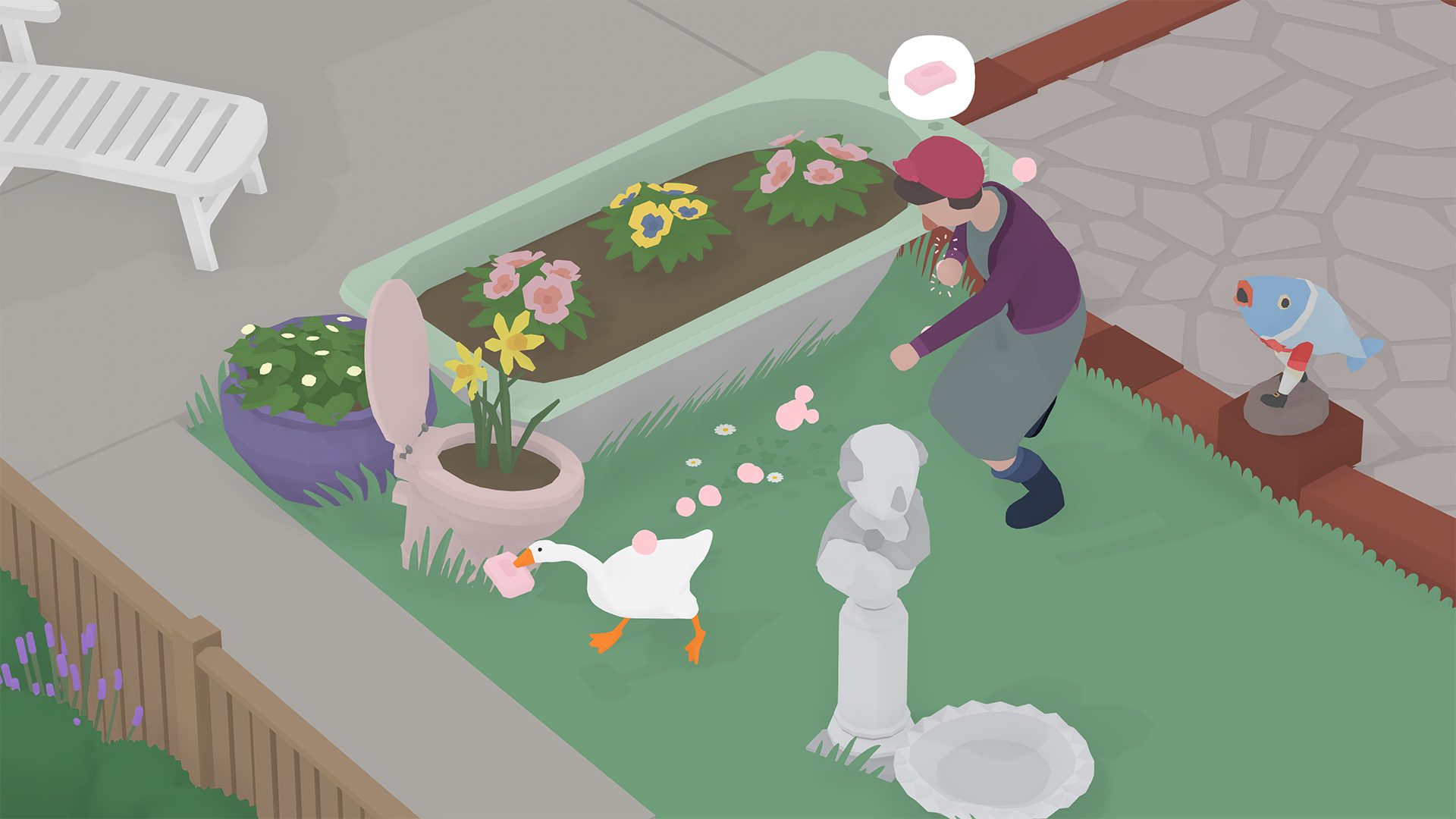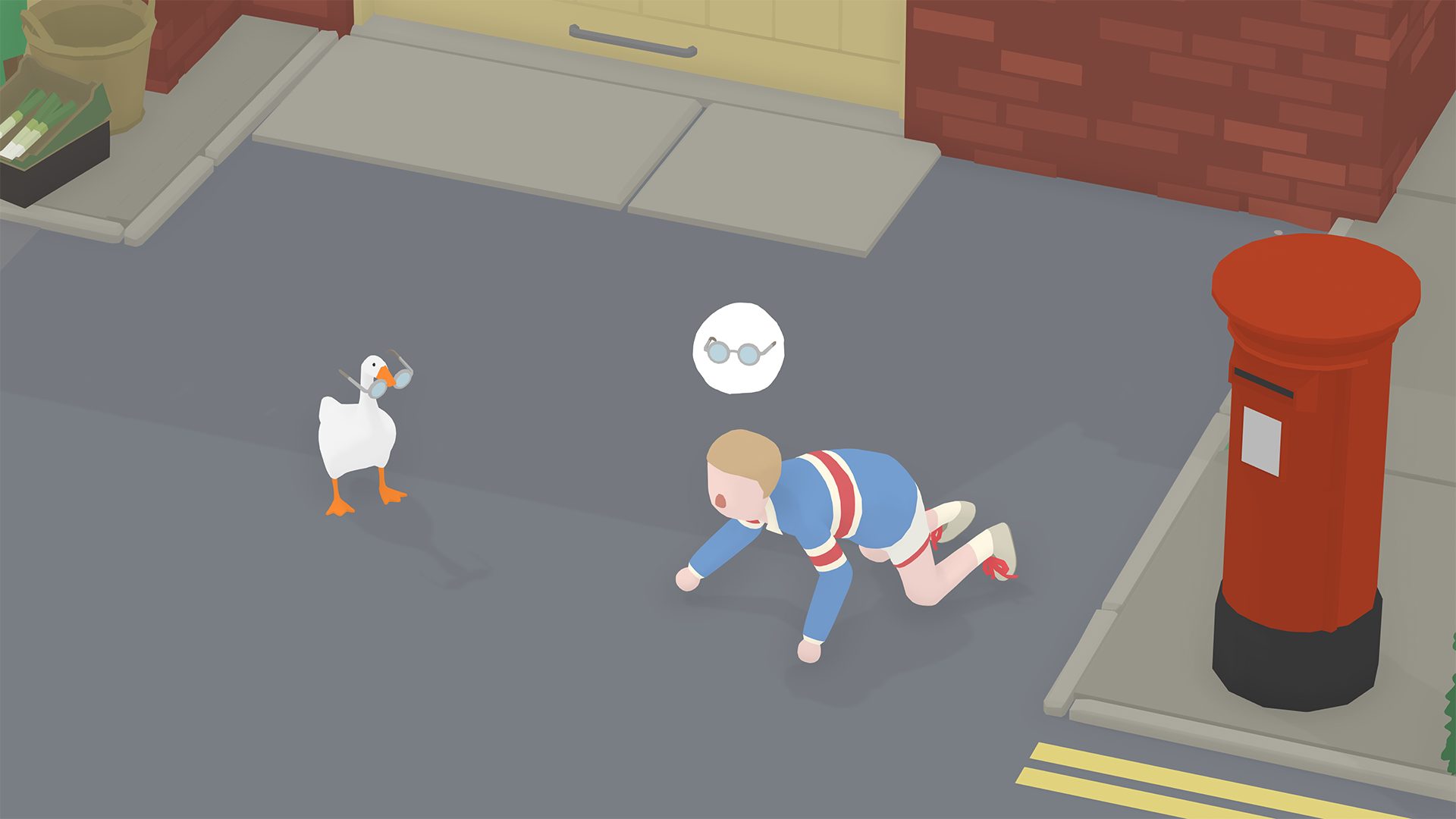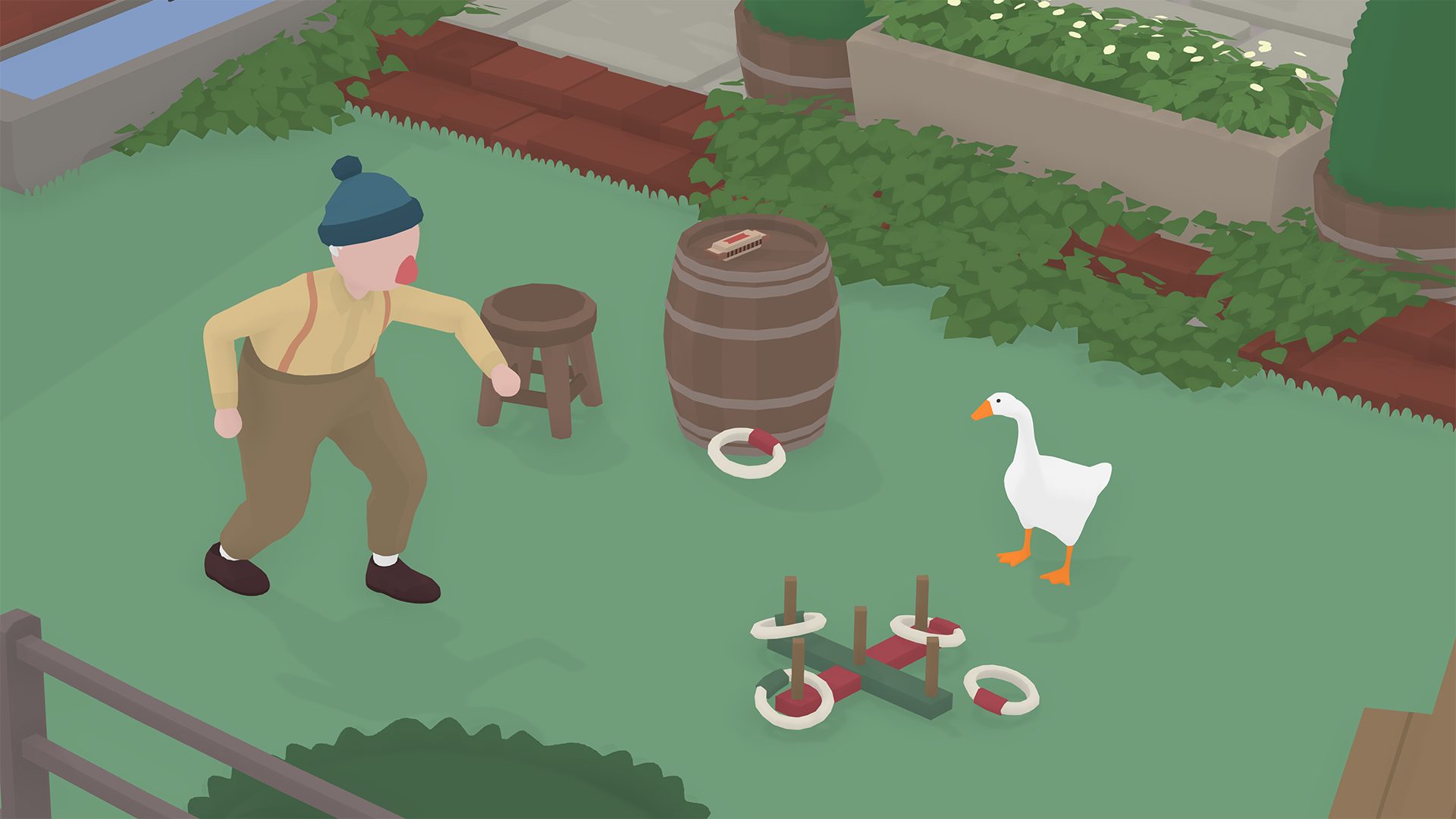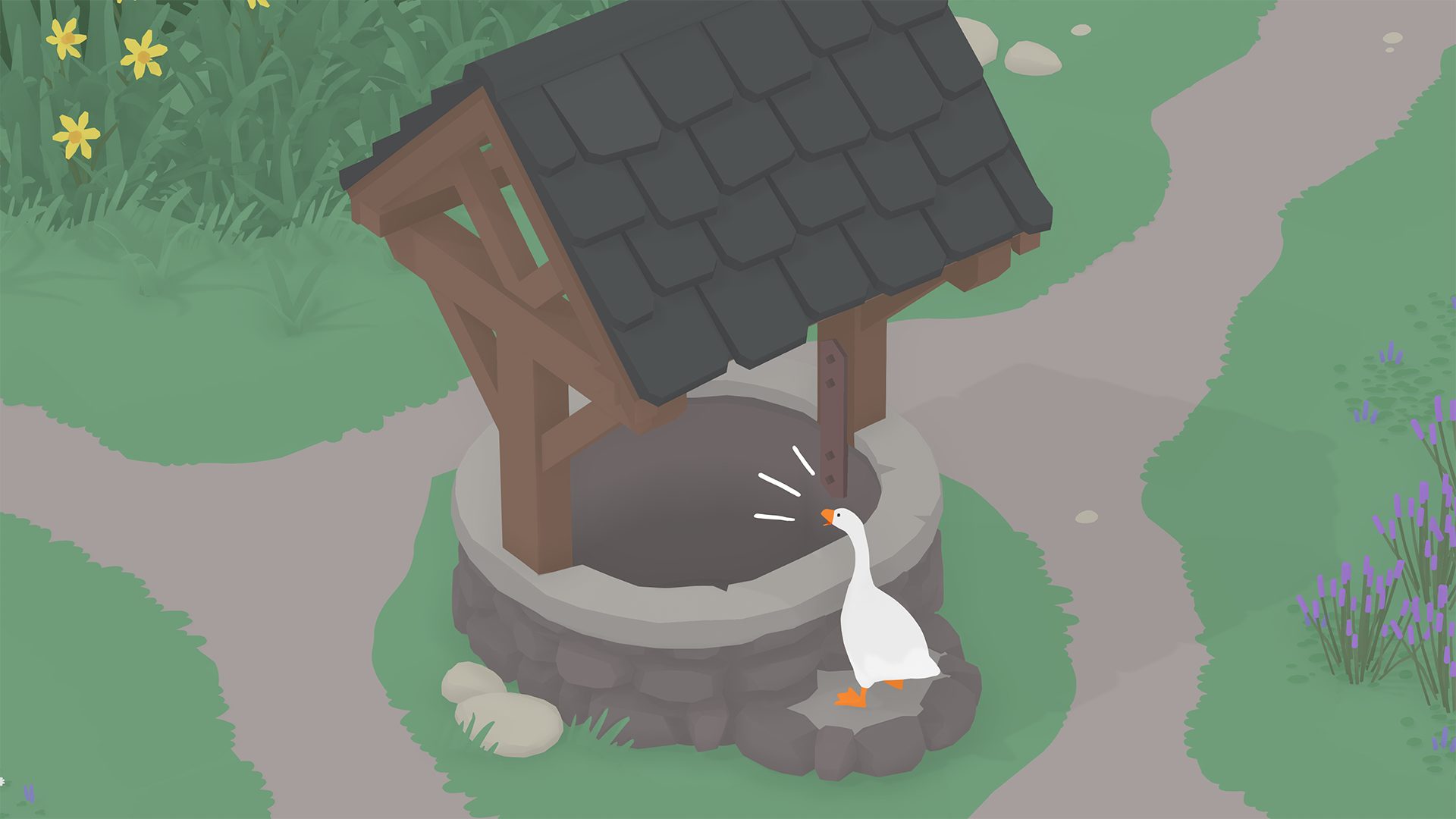
They say that anatidaephobia is the irrational fear that somewhere, somehow, there is always a duck watching you. Is there a word then, for the fear of a goose repeatedly stealing your glasses and running away with your toy aeroplane? Because maybe there should be.
“It’s a lovely morning in the village and you are a horrible goose.” So proclaims the tagline for Untitled Goose Game. And to be honest, that pretty much sums it up. The aim of the game is to travel around a sleepy rural village as a horrible goose, completing tasks such as “make the shop scales go ding”, and “steal the old man’s woollen hat”. It’s very silly. But it’s so much fun, and the art style of the design is very much responsible for this.

With exhibitions dedicated to game play and design in the V&A, and MoMA’s growing collection of video games, it’s hard these days for even the most strident traditionalist to effectively argue that video games are not art, and the design for Untitled Goose Game is certainly an attractive aesthetic. Created by Australian game developer company, House House, the art style of Untitled Goose Game’s graphics is playful and stylishly simple. The colours are subtle in their low saturations, but each graphically generated shape is comfortingly well-defined, right down to the human characters’ triangular turnip noses.
“It’s hard these days for even the most strident traditionalist to effectively argue that video games are not art”
The shapes are as round and bouncy as the goose’s waddle, which means that, even in a world where falling over in puddles and being repeatedly thrown over fences is really quite commonplace, the violence is pretty low stakes and, to be honest, you don’t even feel bad when you, say, honk at a small crying boy until he runs to hide in the shed and you can lock him in. It’s feels like a happy-go-lucky Bob the Builder kind of world, in which you can take comfort that no real damage will ever be caused.

While, in theory, the game has goals and aims, the fun isn’t really in completing the list of tasks. This is no Candy Crush—the dopamine hits lie not in the achievement but in the comedy. Dialogue is limited to the emoji-filled speech bubbles of confusion or outrage which pop up above the characters’ heads and the player’s own indignant horrible-goose honks. This is all set over a background ambience of tranquil Debussy préludes, and the lack of speech or dialogue means that the physical comedy element of the game is amplified. It’s very Charlie Chaplin, but with fewer moustaches.
The simplicity of the game leaves miles of room for the player’s own creativity. You can play it however you like, creating your own tasks; for example gathering all of the anti-goose signs that the frustrated villagers have made together to create your own anti-goose exhibition, or combining harmonica and wind chimes to form a one-goose band. Always a good indication of an art piece’s creative mark on popular visual culture, Untitled Goose Game memes now abound.

The thing is, as we complete each of the game’s pranks, we know what joke is coming. It’s no surprise when the little boy falls over in the puddle, and yet it’s no less satisfying for that. There’s no backstory or motivation—we know we’re not saving the world or avenging the kidnapped princess, but we don’t need to be. Untitled Goose Game is ultimately just really childish, and that is its appeal. With design that is beautiful and yet accessible and simple, we can enjoy the charm of the uncomplicated for a little while. We are just a toddler laughing in delighted schadenfreude as we watch someone fall on his bum. Again.





